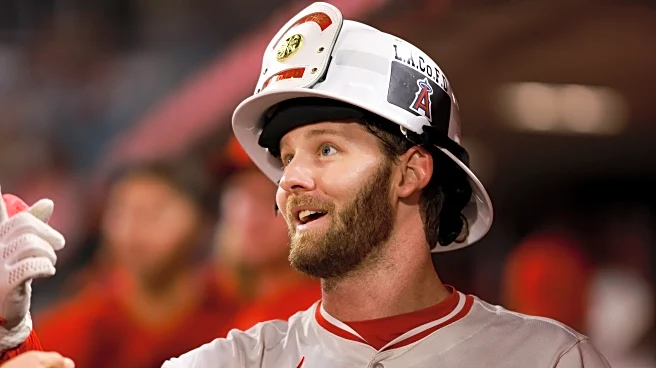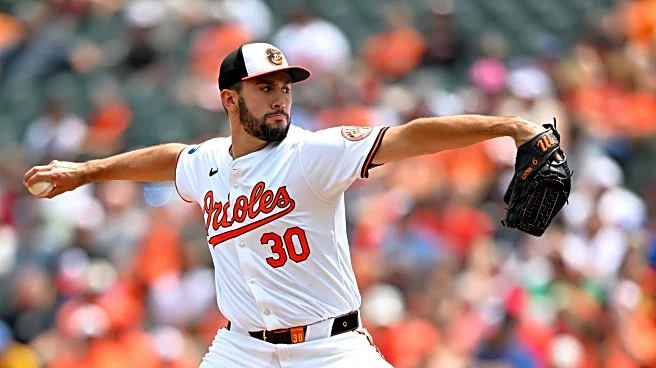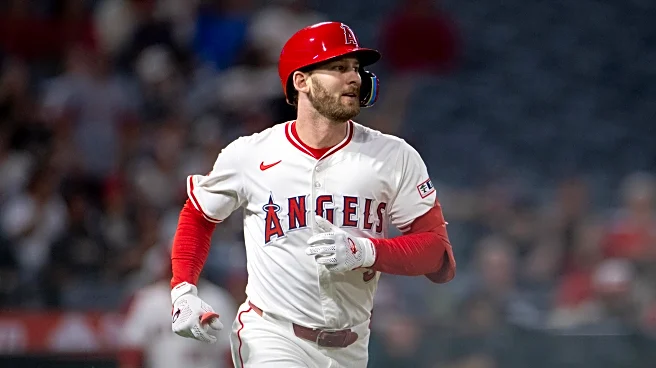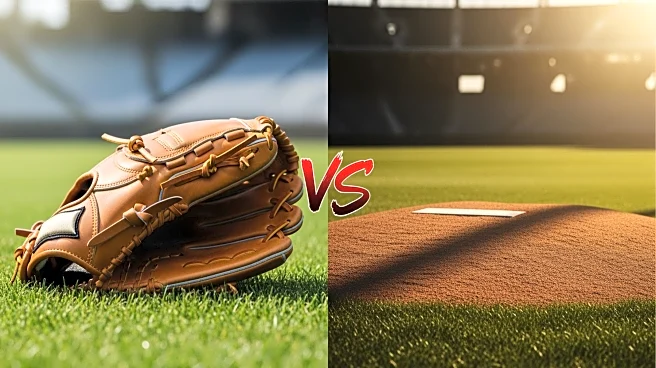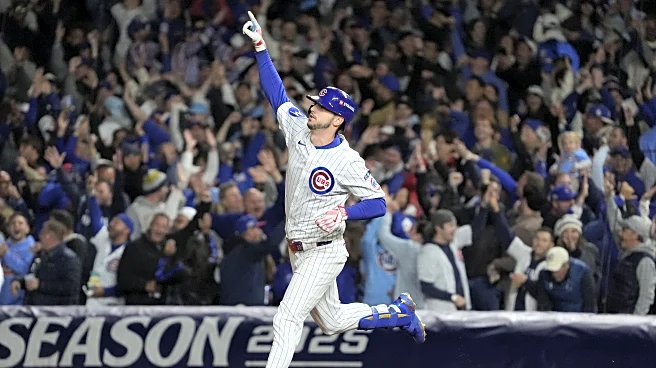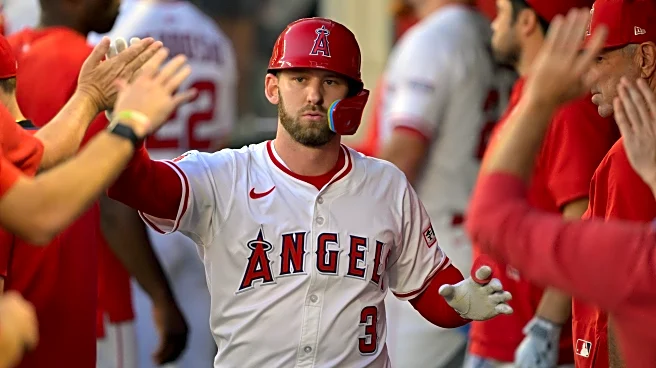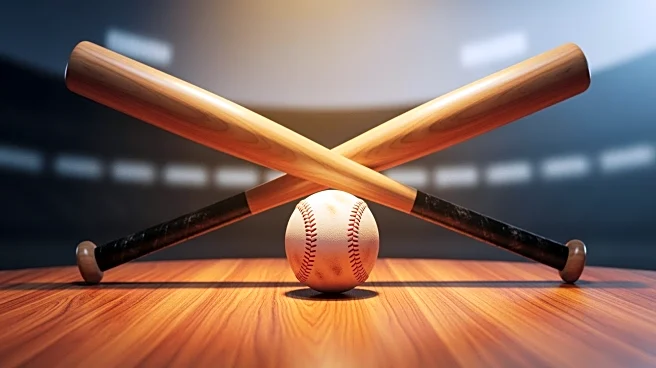The Orioles traded Grayson Rodriguez last night. Even with a little time to digest this maneuver, that was still a surprising sentence to write out. Mike Elias really went and did it, whatever “it” might
turn out to be, bringing in 31-year-old outfielder Taylor Ward from the Angels. The righty-batting Ward has one year remaining before becoming a free agent. That, in the end, is what the market deemed Rodriguez to be worth.
This is a difficult pill for any Orioles fan to swallow who has been invested in Rodriguez’s success for the past several seasons. He was an exciting pitching prospect to have had in the system for several years while he developed, a consensus top 10 prospect in the game who seemed to have the potential to anchor the top of the rotation for years. That’s tough to let go. Even given that he hasn’t pitched since July 2024, there’s a natural reaction: That’s the best they could do, really?
That knee-jerk reaction out of the way, let’s think about this a little more and see if any other feelings set in.
Taylor Ward’s pros and cons
The first thing to observe about Ward is that he hit 36 home runs last year. That’s more than double any one 2025 Orioles player. Power hitting was a weakness with the team and here is a guy who can be reasonably expected to supply some of it – maybe not duplicating 36 homers but cashing in at least 25. Considering his Statcast profile, this is power that should transfer reasonably well to Oriole Park at Camden Yards now that Walltimore 2.0 is established. His xHR for OPACY last year was 33. On the road in Boston, for instance, it might be more about doubles off the Green Monster than homers.
The second thing to observe about Ward is that he is another low batting average, high strikeout guy in the outfield mix. Or at least he was in 2025, batting .228/.317/.475 while striking out 175 times in 157 games. He has seen his strikeout numbers jump in the last two seasons. If other high strikeout Orioles on the 2025 roster had been walking as frequently as Ward, and homering as frequently as Ward, we would probably be less grumpy about the season that was and less gloomy about the season to come.
Despite poor bat speed (15th percentile), Ward has done well at getting the barrel to the ball (84th percentile) and although you might not expect it from his strikeout totals, he’s also good at not chasing pitches that are out of the strike zone (92nd percentile chase rate). Once a speedier player, he has seen his speed decline in his 30s and this has impacted his defensive capabilities. I wonder where he will be playing mostly at Camden Yards, given that he doesn’t seem to have the range for the expanded left, nor the arm strength typically expected for right field.
Ward has been a strong hitter against lefties in his career and that continued this past season. He’s better than a mere platoon player, however, proving at least decent against same-handed pitchers.
This is not a move that comes with much long-term benefit. Ward is a fourth-year arbitration player who will become a free agent after this season. He’s projected to get an arbitration salary in the vicinity of $13 million.
The baggage of Orioles pitchers past
It still hurts that the past regime of the Orioles gave up on Jake Arrieta in a trade that has a lot in common with this one, and then Arrieta went and became a Cy Young winner with the Cubs two years later. “Everyone” always knew that Arrieta might be able to figure it out. I certainly did. He did not figure it out with the Orioles. They traded him and Pedro Strop for two months of Scott Feldman, who did not help the 2013 Orioles make the postseason. It was bad that the Orioles were never able to develop Arrieta and bad that they eventually traded him for, if not exactly junk, nothing that made a big positive difference.
Mike Elias is not burdened by this same baggage, nor by the baggage of Kevin Gausman getting traded for what was to the Orioles a bunch of junk (although Evan Phillips became good elsewhere) and eventually, on his third team after leaving the Orioles, figuring it out.
Gausman was also a former top 10 prospect in the game. However, it’s worth remembering that guys like Brian Matusz and Dylan Bundy once held this same distinction. Sometimes guys just don’t make it to be what you thought they would. In retrospect, there are players who you could have traded when they still had value, but this is only apparent in retrospect. You can also hold onto guys for so long that they aren’t even worth a Taylor Ward-level transaction.
Grayson Rodriguez, particularly
Rodriguez was going to make his MLB debut in 2022 before he suffered a lat strain that knocked him out for the rest of the season. Fully healthy in 2023, he pitched 31 regular season games and one postseason game between Norfolk and Baltimore. The major league results were, in the aggregate, not good, as he finished the regular season with a below-average 94 ERA+ and proved completely unequal to the task of being a postseason starting pitcher.
There was cope at the time, which I also engaged in because like you I needed to believe it was true, that maybe Rodriguez had figured something out, because while he was horrible in the first half of the season (7.35 ERA), he went on to an amazing second half (2.58 ERA with a .590 OPS allowed). In 2024, Rodriguez was a bit better, but nothing like his second half of 2023. After pitching in 20 games, he ran into the lat issue again, which kept him from pitching once the calendar turned to August.
Rodriguez did not throw a competitive pitch in 2025. He never even made it so far as a minor league rehab assignment. That is because he suffered some kind of elbow pain in spring training, then while coming back from that injury, was shut down due to a recurrence of the lat problem. Coming back from that lat issue, wouldn’t you know it, the elbow hurt again.
One might have reasonably feared a Tommy John surgery was inevitable at this point. The Orioles were always insistent that it wasn’t UCL damage. The eventual diagnosis from the Orioles was bone chips in his elbow, for which Rodriguez received surgery that ended his season. That is much less serious surgery than ligament repair. As far as anyone knows, Rodriguez is supposed to be ready to go for next season.
Lingering questions
Just how much of a mess must the Orioles believe Grayson Rodriguez’s medical issues to be?
Elias was not talking about Rodriguez as an Opening Day rotation candidate. It would have been concerning if he had been. However, as far as any public person could guess, the Orioles could have used one of Rodriguez’s minor league option years to start him at Norfolk and see if he can either return to being a Dean Kremer-level starter or develop into something better. Or they could have tried to convert him into a reliever, if they believed he would not be able to handle a starter’s workload.
Either of these outcomes would have been more valuable to the Orioles, if successful, than the trade for Ward is likely to be. There are still four years of team control for Rodriguez, two of which where he can be optioned to the minors. He’s only going to be 26 next season.
Medical information is shared before trades are made. Teams can get in trouble for hiding things. The Angels know whatever the Orioles medical team knows. The Angels might not know if, say, the Orioles had been doing some internal scouting on Rodriguez’s recovery process – if Rodriguez is throwing, and his velocity stinks or his pitches don’t have the same movement and they believe these things might not return. If Rodriguez’s Angels tenure looks something like Dylan Bundy’s, Elias will not have very much egg on his face, at least for the Rodriguez angle of the trade.
Does acquiring Ward close the door on any other substantial addition to the outfield?
Although nearly every one of us knows better than to do this, we could all easily talk ourselves into the sense of the Orioles addressing this year’s lineup problems by splurging for one of the bats available on the free agent market. I was going to write about how the Orioles should sign Cody Bellinger, even though I knew they wouldn’t. My Camden Chat colleague was keyed up to write about Kyle Tucker.
These pie-in-the-sky dreams appear to be smashed. Unless Elias is going to surprise me again, probably so are more modest dreams of signing someone like Harrison Bader. Although there might be some marginal tinkering to the position player mix, my guess from this point is that there won’t be any substantial free agent bat added. We could already suspect that a lot of the Orioles eggs were in the “get the returning players to hit better” basket. That seems like an even safer guess to make now.
What the heck are the Orioles going to do about the starting rotation?
This trade should not have had any immediate impact on anyone’s imagined 2026 season-opening Orioles starting rotation. Counting on Rodriguez for anything would have been foolish. In that sense, this has no direct impact on the pitching part of the offseason plan. The Orioles already needed to get two starting pitchers, one of whom can credibly step in to the front of the rotation, and after trading Rodriguez they still need to get two starting pitchers, one of whom can credibly step into the front of the rotation. The success or failure of this offseason and next season are going to have a lot to do with who they get and how well those people do.
Maybe it has an indirect impact, because with Ward set for a $13 million(ish) salary next year, the Orioles might have just used up around one-sixth of their assumed available money on this guy. That’s less available to get a real impact pitcher for the rotation, plus a back-end starter, plus an experienced closer, plus maybe another solid reliever. I won’t be holding my breath for the David Rubenstein ownership group to surprise us with an aggressive budget, though it’s always possible until events prove otherwise.
Final prediction
With reasonable confidence that this will not be the worst take I ever post to this website: Rodriguez does nothing with the Angels in the next two years to make this trade truly barf-worthy. Ward hits 28-30 homers while putting up like 2.2 WAR for the 2026 Orioles. This is not the make-or-break move of the offseason.
